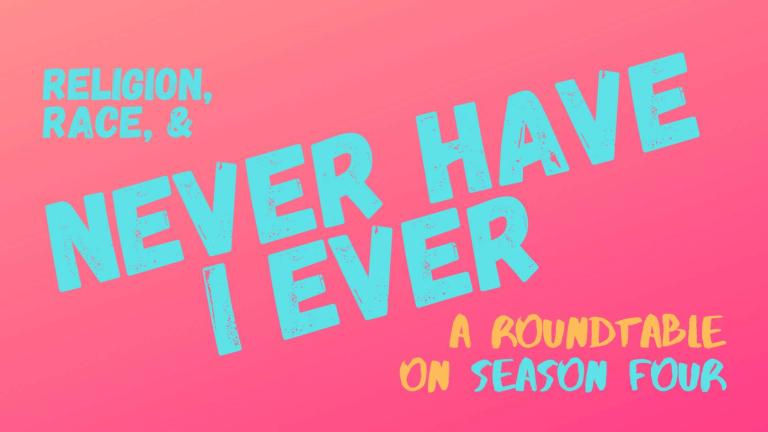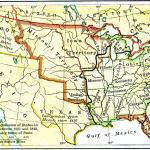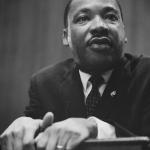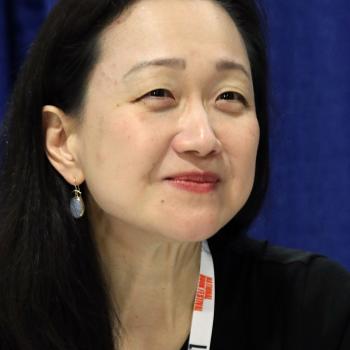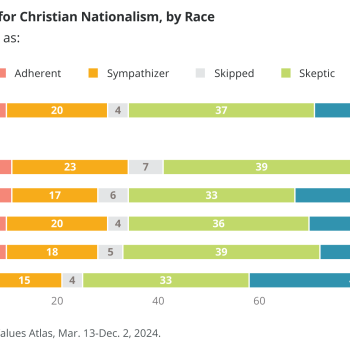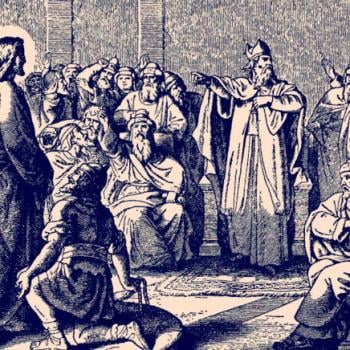At long last: the final season of Never Have I Ever is here, and we finally get answers to our burning questions. Will Devi end up with Ben or Paxton? Will she fulfill her dream of getting into Princeton?
Just as we have done for the last three summers, I gathered together scholars of Asian American religion to offer some reflections on Season Four of Never Have I Ever. We each address different themes: Himanee Gupta of SUNY Empire State College reflects on the show’s depiction of the model minority and its connection to her own life growing up in an Indian American family; Jerry Park of Baylor University considers the show’s portrayal of Asian American religious practices in the home; and I talk about how the show offers an opportunity to think about interreligious and interracial marriage among American Hindus and Jews.
Please note that we include spoilers in our discussion, so consider watching Season Four in full before reading any further.
https://www.youtube.com/watch?v=IemUKB4kCWM
New Models for Us Minorities
Himanee Gupta
As I watched the last of Never Have I Ever, my tears flowed. After four years of gritty determination to get through a pandemic, a rise in anti-Asian hate crimes, a near collapse of democracy, displacement from my home and a divorce, I needed that cathartic cry.
What we lived through off-screen wasn’t in the series’ story world. Yet, through Devi Vishwakumar’s journey through high school, I discovered that I yearned for what she discovered she had: Something more meaningful than Princeton, the emblematic batch of model minority success.
Throughout the four years that I’ve written about Never Have I Ever, I have felt my life reflected in Devi’s trials and tribulations as well as those of her mother Nalini and her cousin Kamala. I’ve replayed my own past crushes and failed loves via the Jewish super-nerd Ben and Japanese-American super-stud Paxton. I wrote often about the damaging effects of the model minority stereotype and explored how producer Mindy Kaling took it on. In the final season, I cried as I laid a few of my own model minority demons to rest.
As a child in the 1960s and 1970s, I loved TV. When HBO and Nickelodeon came onto the scene, I stayed up well past midnight consuming reruns. But then came college, and I quit all that because it seemed frivolous. I had to be SERIOUS to succeed because being a woman and a person of color had dealt me a double whammy: I had to work twice as hard as twice as hard – no, that is not a grammatical error – to succeed.
Unlike Devi, I was not an “academic powerhouse.” It was assumed I’d go to college but not to an elite institution like Princeton. Then, in May 1981, a few weeks before graduation, I got the news I had both hoped for and feared: Northwestern University had accepted me into its Medill School of Journalism.
A near-Ivy League future could be mine.
I balked. Northwestern was expensive. I had a week to decide. I thought I would say no. But then my father told me: “I’m sending you to Northwestern. You deserve the best.”
My father’s words surprised me. But as I got to know Devi’s father Mohan through her flashbacks, I saw the context in which he might have come to that conclusion. Mohan also had to endure the impacts of the model minority stereotype; he worked so hard to make himself and his family a success that he died of a heart attack. His death devastated Devi as well as her mother Nalini. Yet, by trying to live up to his expectations, each found a different and perhaps more wholesome future for themselves.
Devi’s prayers in the form of conversations with deities opened Season One and closed Season Four. At the end, we see a newcomer to the altar: Mohan. His photo is decked in a garland in keeping with Hindu practices of honoring deceased loved ones. Yet, Mohan on the altar and in the series is quite alive. Through him, we see the model minority with its flaws: a man leaving India for America, dreaming to create a stupendous life for the wife he loved and daughter he adored, struggling with the whiteness of success. He found a way to fight back through emulation of the fiery tennis star McEnroe. McEnroe spoke truth to power on the tennis court and offended many. And he didn’t care.
As Devi exits high school, I am reminded of what my mother told me as I prepared to leave for Northwestern: “Don’t forget your Indian heritage; things will be much easier for you if you don’t.” Just as I took my Indian heritage with me, so does Devi take Mohan and his hopes. How might this shape who she becomes?
https://www.youtube.com/watch?v=LrqUGjLJLeM
Everyday Hinduism: Religion in Mindy Kaling’s Never Have I Ever
Jerry Z. Park
As a sociologist by training (with considerable admiration for history and media studies), I enjoy partaking in the cultural zeitgeist when the subject matter in contemporary media turns to portrayals of religion. And I pay even more attention when those portrayals of religion are from Asian American characters or communities. What stood out for me was the portrayal of religion in the main character’s (Devi Vishwakumar) home in Mindy Kaling’s Netflix series Never Have I Ever, which just concluded its final season.
Sociologists of religion over the past decade have expanded the study of religion into spaces outside of the local faith community. One particular strand of research is the expression of “everyday religion” in the home. (The larger body of work is called Lived Religion.) Some readers might know about this with respect to the home practices of Protestantism and Catholicism, and perhaps Judaism as well. But Hinduism and other faiths that are more popular among people of Asian heritage are less well articulated. From my perspective as someone who grew up in an Asian American immigrant household where faith was a central component, Devi’s prayers to her gods for academic success both in the present and in her aspirational goals of attending an Ivy League school were remarkably relatable. Substitute Krishna for Jesus and the prayers sound very familiar. This familiarity glosses over some important differences in theological perspective, but from a social scientific view, it was an excellent example of how religion functions in similar ways regardless of the particularities of Hinduism and Protestant Christianity. This is also reflective of Christian Smith’s concept of Moral Therapeutic Deism, where he argues that religion for most young people consists of belief in a divine figure who aids the believer especially in times of stress and need but is otherwise absent. Devi’s dreams of attending an Ivy League school are captured in her prayers in her home shrine at multiple times in the series, particularly at the beginning and end of the series. Perhaps most touching was her prayer of thanks she hurriedly gave to her gods before leaving her home as the final scene closes.
These portraits help give viewers a glimpse into what religion looks like in the private lives of many. One of the least portrayed religions (based on my amateur-level media consumption) is Hinduism in the United States. About 2.8 million Asian Americans identify as Hindu according to analyses of recent survey data from the Collaborative Multiracial Post-Election Survey, and that accounts for about 12% of the Asian American population on the whole. What this means to me is that while many Americans may not know anyone who practices Hinduism (who are less than 1% of the population in the United States), Asian Americans likely know someone who does. For many scholars of religion, American Hinduism is hardly ever featured, and in most American media it has been a rare sight. But this has changed a lot since I was growing up. I have kept track of the various attempts at bringing into popular media (especially television series) Asian American stories of family domesticity such as Fresh Off the Boat, Chad, and Champions–and in none of these is faith even remotely involved in the story, particularly in the way it is expressed in the home. (A few readers might cite Kim’s Convenience and Ms. Marvel, but these focus on religion primarily in its communal form, whether church or mosque. In neither of these is religion a feature of home life in the way it appears Never Have I Ever.) I do hope that we will see more of these kinds of domestic faith practices as experienced in Asian American homes inasmuch as we have seen its white and Black American Christian equivalents throughout the past 50 years of American television.
Race, Religion, Romance, and Ritual: Reflections on Nirmala and Len’s Hindu-Jewish Wedding
Melissa Borja
Part of the genius of Never Have I Ever is that it reflects broad and significant changes in contemporary Asian American life at the same time it features people who are challenging assumptions, testing boundaries, and creating new versions of the Asian American story. In my view, Nirmala, Devi’s paternal grandmother, is one of the best examples of a character who shows the world both as it is and as it could be. In the final episode of the fourth season, Nirmala, an Indian Hindu widow, marries Len, a white Jewish man, in a joyous Hindu-Jewish wedding that reveals important trends in how diverse Americans are falling in love and creating families of their own design.
The marriage of Nirmala and Len reflects a major shift in American culture: in the United States, more couples are marrying across religious and racial lines, and interreligious and interracial couples are more accepted by society. According to Pew’s 2015 Religious Landscape Study, 39 percent of Americans who married since 2010 married somebody who is of a different religion, whereas only 19 percent of Americans who married before 1960 married across religious lines. Pew’s analysis of the 2014-2015 American Community Survey also found that interracial marriage has increased significantly over the past half century, especially among Asian and Hispanic Americans. In 2015, for example, 29 percent of newly married Asian Americans had wed somebody of a different race or ethnicity. Attitudes about interracial marriage have also warmed. In 2015, 39 percent of survey respondents said that the growing frequency of interracial marriage was good for society, a notable increase from the 24 percent who said so just five years earlier. Only 10 percent said that they would object to a family member marrying across racial lines, whereas 31 percent said that they would oppose such a marriage in 2000.
The fact that Len is Jewish reflects another related trend: interreligious marriage is quite common among Jews in the United States. According to a 2020 Pew study of Jewish Americans, 42 percent of married Jewish survey respondents reported that they were married to somebody who is not Jewish, and the percentage was even higher (61 percent) for those who married after 2010.
Samira Mehta, Director of Jewish Studies at the University of Colorado-Boulder and an expert on interreligious marriage, argues in a recent article in the Journal of the American Academy of Religion that interreligious marriages between Jews and adherents of Asian religions (in this case, Hinduism) are distinct from interreligious marriages between Jews and Christians. As she explains,
…American Jews’ understandings of Christianity are rooted in the long and deeply intertwined history of Judaism and Christianity in Europe and the United States. This history is characterized by a power imbalance that has resulted in everything from Jewish assimilation to Christian norms to genocide. No such historical trauma exists in the relationship between Judaism and Asian religions…the Asian and Jewish families that encounter each other through contemporary American marriages have relatively little shared history outside of the context of the United States. This means that, although they may encounter each other with fears about
“outmarriage,” the Jewish partners and families do not encounter Asian traditions with the same complex reactions built on generations of living as a minority within Christian culture. Rather, when white American Jews have encountered Asian traditions in the context of either the contemporary United States or in their travel as Americans, they have usually held more power in the relationship than their Asian interlocutors, a dynamic that limits how threatening American Jews find either those interlocutors or their traditions.
In the same article, Mehta offers a detailed description of a Hindu-Jewish wedding in which an Ashkenazi Jewish bride and a Gujarati Brahmin groom include both Indian Hindu and Jewish traditions in their marriage ceremony–an example of how interreligious couples often strive to honor one another’s different backgrounds by combining rituals in a shared event. The mixing of traditions that Mehta recounts is much like what we see in Nirmala and Len’s wedding in Never Have I Ever. Nirmala wears a sari, and Len wears a yarmulke, and a Hindu officiant and Jewish officiant jointly lead the marriage ceremony. There are Hindu rituals: Len presents Nirmala with a pendant necklace, they exchange flower garlands, and they tie their clothes to one another before walking around the sacred fire. And there are also Jewish rituals: the ceremony concludes when Len breaks a glass and the guests yell “Mazel tov!” Even their friends and family members participate in activities that involve crossing religious and cultural boundaries. An East Asian male guest is shown wearing a yarmulke, while white female guests are shown wearing bindis.
The enthusiasm for mixing religious traditions both in on-screen and real-life weddings owes in part to flexible attitudes about what counts as “religious,” but also to ideas about Asian religions and appropriative practices that are common in a Western context. As Mehta points out,
…The “East” has long been exoticized and commercialized in the United States and Europe, making it an appealing spiritual playground in the American imagination (Iwamura 2011). For instance, many Americans, Jewish and otherwise, have yoga or meditation practices in which they chant sutras from Hinduism and Buddhism, learn worldviews and spiritual teaching drawn from those traditions, and do so without a sense that such behavior threatens their primary religious identity (or signifies taking on a new religious identity) (Jain 2017; Jain 2014). More to the point, they take on these identities without sacrificing their identities as Christians and Jews (Tanaka 2007, 115–16)…Both Hinduism, through yoga, and Buddhism, through meditation, became traditions that American Jews easily combined with their Judaism. Not only do many individuals see no contradiction in combining Hindu or Buddhist teachings and practice with their Jewish identities, but also any number of pieces of popular culture and literature support such behavior…
On this final point, Never Have I Ever is an example of popular culture that normalizes and affirms Hindu-Jewish marriages and, beyond that, supports Jewish engagement in Asian religious traditions.
But if Nirmala and Len’s marriage reflects some broad trends, a few aspects of their romance make theirs a different type of interreligious, interracial Asian American love story that pushes boundaries.
For one, Nirmala is a widow who is Indian and Hindu. Mehta explained to me that Indian Hindu widows do not typically date and remarry, so Nirmala’s wedding is not culturally scripted. Moreover, interreligious marriage is not particularly common for Indian Hindus both in the United States and in India. For example, in its 2015 Religious Landscape Study, Pew found that 91 percent of Hindus in the United States are married to other Hindus. And in a 2021 study, Pew found that in India, the country where Nirmala was born and lived most of her life, nearly all married people (99%) said that they married somebody who is of the same religion, with Indian Hindus reporting the highest rate of being married to a co-religionist.
Second, Nirmala is an elderly Asian woman. In both scholarly and popular conversation, interreligious and interracial marriage among elderly people receives little attention. And while there are some popular portrayals of sexuality among elderly people–Blanche on Golden Girls, for example—rarely are elderly Asian and Asian American women presented like Nirmala, who discusses her sex life openly and enthusiastically. (She told her family, for example, that she selected her wedding date with the guidance of her astrologer, who said the chosen date was “a very auspicious day for sensuality.”) To be sure, Nirmala’s frank discussion of her sex life is often used as fodder for jokes, and I wonder if the sexuality of elder Asian and Asian American women will ever be treated with seriousness.
Will Nirmala’s character pave the way for more stories that attend to the love and sex lives of Asian/American senior citizens and their interreligious and interracial relationships? Never have I ever seen this before, but if anybody creates a spin-off television show featuring Len and Nirmala, I’m certain I’d watch it.


